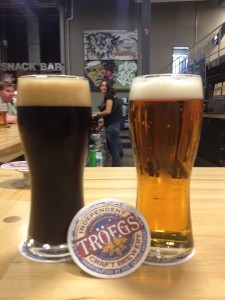
TL/DR:
- Use baking soda and hot, hot water to wash your beer glasses
- Practice proper pouring if you plan to review head
- If the environment is being cruel to a beer, don’t review it based on that session!
When I first decided to write a beer blog, I expected that I would start writing a lot of beer reviews, and I wanted them to be good. I decided to ask experts from the Google: What makes a good beer review? I was floored by how many seemingly-objective categories make up a beer review. I looked through a dozen sites or so, and they all agree there are five categories: appearance, aroma, taste, mouthfeel, and overall.
I want to explain (rant a bit) on why – as an ameteur reviewer – appearance is not something I plan to add. The primary reason is the head. There are some places that recommend you measure it, some want you to describe the space between the bubbles. I say to hell with that. First off, the way the beer is poured makes a huge difference in how fizzy the beer appears, and it changes the head. I know this because in my experience, the head of my first beer is much smaller than the head of the 4th beer. I am not sure why…
Second, external factors, like cleaners, affect the head, legs, and possibly the fizziness. The first growler I ever owned had instructions on it which included “Do not use soap to clean.” I have followed this advice religiously… for my growlers. I asked a couple tap room bartenders, and they all agreed that soap will linger and will impact the appearance and other characteristics of the beer. It wasn’t until I was reading an article all about how to review the head of beer that it dawned on me that my beer glasses should be cleaned the same way! Here is a great explanation from the Realbeer.com library of how to care for your beer glasses.
Without knowing the immediate history of my beer glass, how can I really be sure the head of the beer I’m drinking is the true representation of the head? The answer, for me, is I can’t, so unless it has poop floating in it (or something equally bad), I don’t plan to review the appearance of the head.
Here’s why. Last night, I decided to use two sets of glasses – one set has only had beer in it, and one set are water glasses. They are washed in the dishwasher. Sometimes they are washed by hand with soap. To compare the difference between glasses, I used two beers: a Sierra Nevada Oktoberfest (bottle) and a Broad Brook Ale (can).
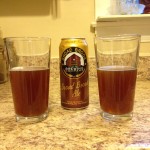
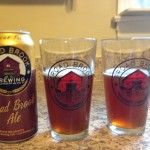
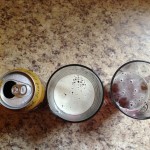
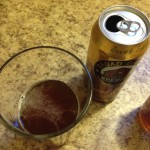
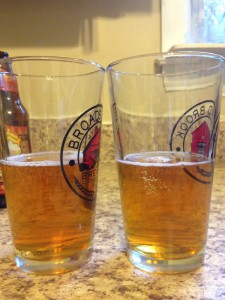
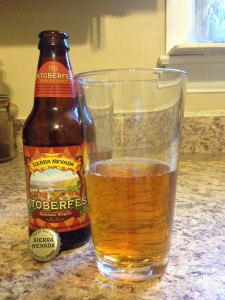
There was a slight difference in the head and mouthfeel of the beers drank out of the daily glasses versus the dedicated beer glasses. Then I washed the daily glasses with Dawn soap (and rinsed it!) and tried another beer. Both were noticeably different, though not by much. Glasses cleaned with soap or dish detergent changed the legs of the beer (swirl a beer and look at gravity pull the beer back down). The head was thinner, and it dissipated faster. The texture (mouthfeel) was the biggest issue. It tasted flatter.
If I had never known about the chemical effects of soap, I would have thought less of these beers, based on the categories of a good/thorough review.
Now that I am more aware, I bought some baking soda and will start using it with very hot water to clean my beer glasses, particularly if I am doing a tasting. I also do not want to write about something where the beer has no control. It’s out of scope – if I could provide a separate review of the beer environment (like “skewed by color of counter” or “imbalanced lighting” or “unclean!”), I would do it, but I feel it should not be part of my beer reviews.
Cheers!